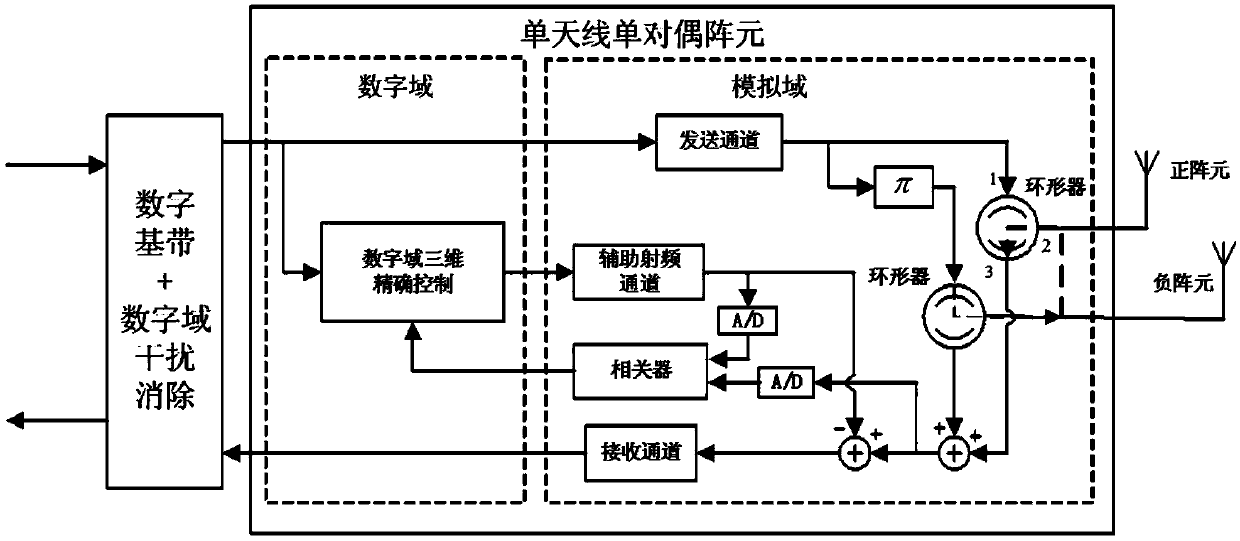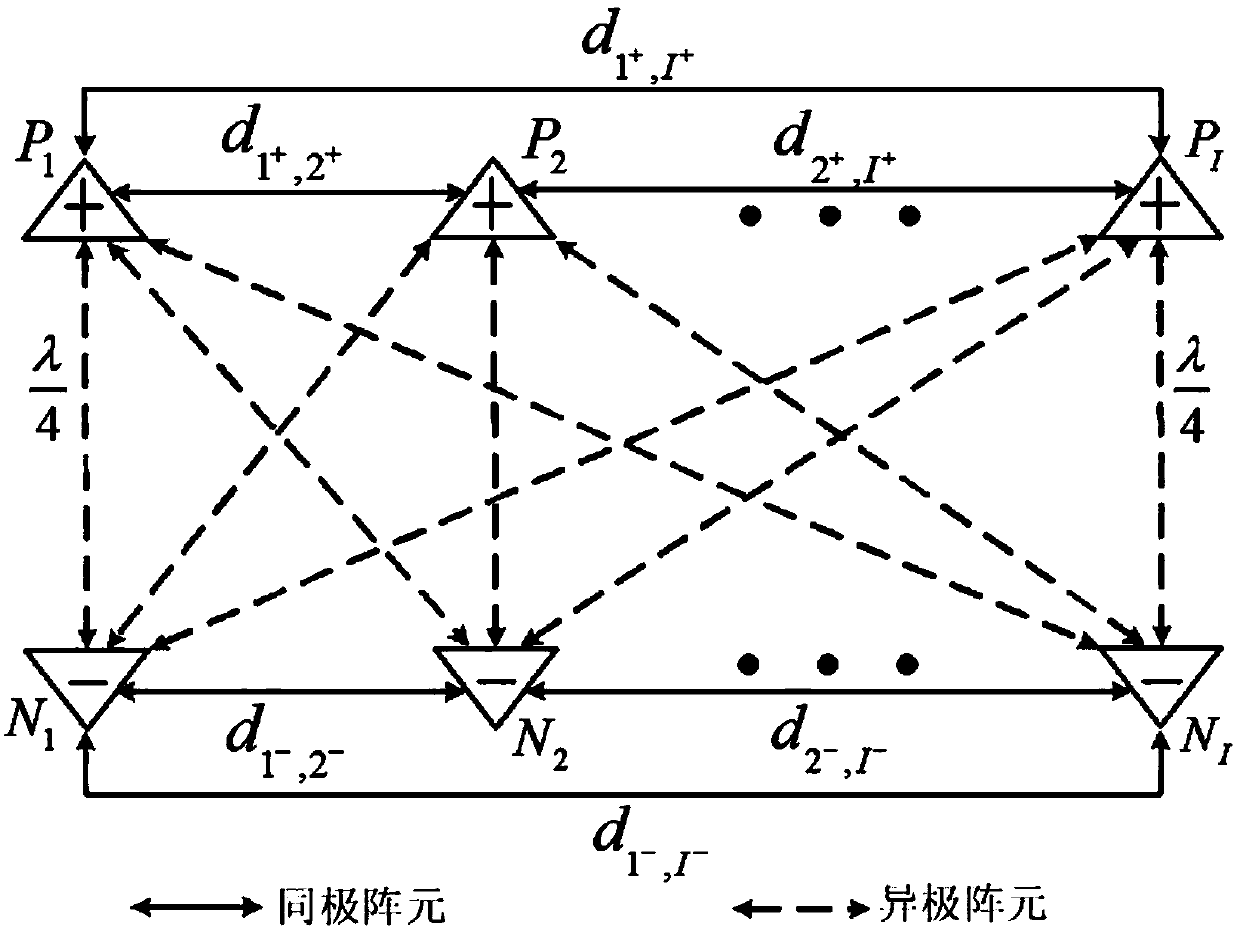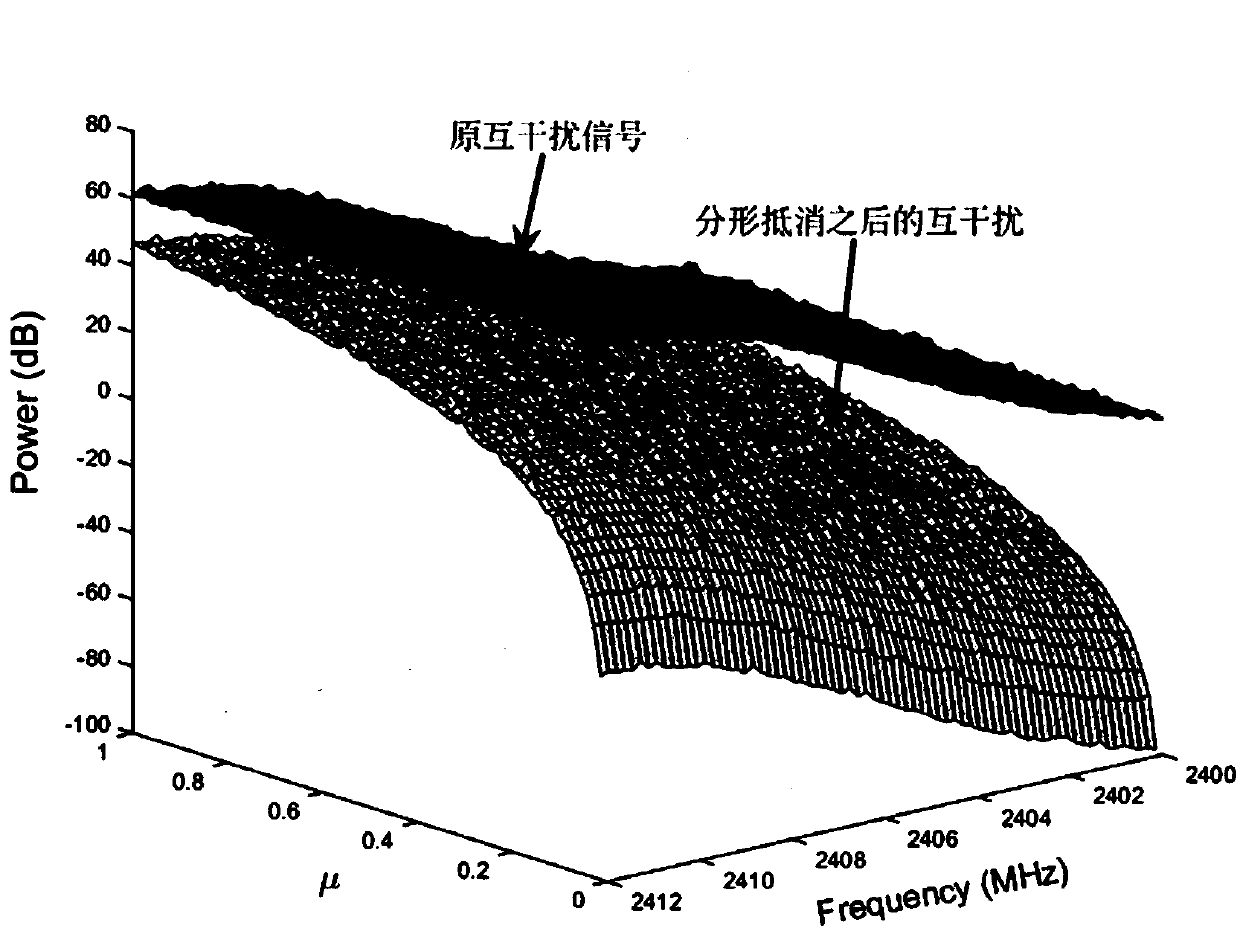Method for eliminating mutual interference between multiple pairs of dual array elements in single-antenna full-duplex communication
A single-antenna, mutual interference technology, applied in the field of communication, can solve problems such as inappropriate large-scale communication
- Summary
- Abstract
- Description
- Claims
- Application Information
AI Technical Summary
Problems solved by technology
Method used
Image
Examples
Embodiment Construction
[0103] In the method for eliminating mutual interference between multiple paired array elements in single-antenna full-duplex communication provided by the present invention, single-antenna multi-dual array elements refer to a common antenna for sending and receiving, and a number of dual array elements are configured, each pair The array element is composed of a positive array element and a negative array element. The positive array element and the negative array element emit the same signal, and the phase difference between the two is 180 degrees.
[0104] The method for eliminating mutual interference between multiple pairs of even array elements in the single-antenna full-duplex communication of the present invention has the following overall idea:
[0105] First, based on the principle of mutual interference cancellation, the basic unit of multi-array element mutual interference cancellation is studied, that is, the hybrid structure of single-array element self-interferenc...
PUM
 Login to View More
Login to View More Abstract
Description
Claims
Application Information
 Login to View More
Login to View More - R&D
- Intellectual Property
- Life Sciences
- Materials
- Tech Scout
- Unparalleled Data Quality
- Higher Quality Content
- 60% Fewer Hallucinations
Browse by: Latest US Patents, China's latest patents, Technical Efficacy Thesaurus, Application Domain, Technology Topic, Popular Technical Reports.
© 2025 PatSnap. All rights reserved.Legal|Privacy policy|Modern Slavery Act Transparency Statement|Sitemap|About US| Contact US: help@patsnap.com



